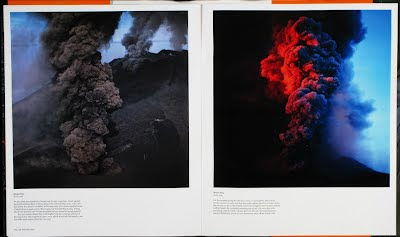The Green of This Notebook. By John Divola. Nazraeli Press, 2008. 44 pp., illustrated throughout, 8x10". Limited edition of 500 numbered copies. Images from here.
Book description:
"John Divola’s 'The Green of this Notebook' is an artist’s book based on Jean-Paul Sartre’s 'Being and Nothingness' in which Sartre attempted, in the abstract, to define the essential character of existence - and in doing so, repeatedly referred to visual illustrations.
In 'The Green of this Notebook', Divola presents a series of related double pages. The images on the left are pages from Satre’s book with the visual references highlighted. On the right are photographs that have been made to correspond to the reference.
The book opens with the highlighted text "I am on a narrow path - without a guard rail - which goes along a precipice." with Divola’s corresponding photograph opposite.
The literal relationship of image/text combinations continues through out the book, ending with “If I eat pink cake, the taste of it is pink.”
Since 1975, John Divola’s work has been featured in more than fifty solo exhibitions in the United States, Japan, Europe, Mexico, and Australia and is included in such collections as The Museum of Modern Art, New York; the San Francisco Museum of Modern Art; Centre Pompidou, Paris; and the Victoria and Albert Museum, London."









































